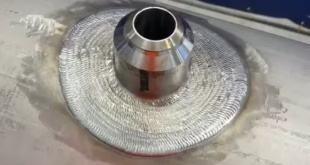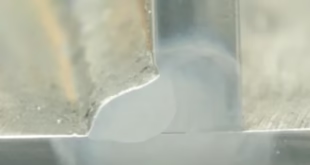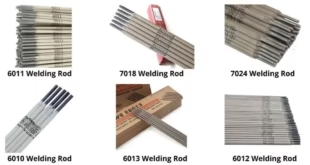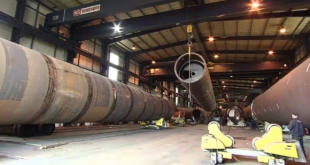TIG Welding
Process and Mechanism
- Tungsten Electrode and Separate Filler Material (if needed)
- TIG welding employs a non-consumable tungsten electrode that generates the welding arc.
- A separate filler material can be added manually, if required, to create the weld joint.
- Inert Gas Shield
- Similar to MIG welding, TIG welding also utilizes inert gas, typically argon, to shield the weld from atmospheric contaminants.
Advantages of TIG Welding
- Exceptional Precision and Control
- TIG welding allows for precise control over the heat input and weld puddle, making it suitable for intricate welds.
- Suitable for Thin and Intricate Welds
- The low heat input of TIG welding minimizes the risk of distortion, making it ideal for thin and delicate materials.
- High-Quality Welds With No Spatter
- TIG welding produces clean, precise welds without spatter or slag, resulting in a visually appealing finish.
- Can Be Used on a Wide Range of Materials, Including Non-Ferrous Metals
- TIG welding is versatile and can be applied to various materials, including stainless steel, aluminum, and exotic metals.
Limitations of TIG Welding
- Slower Welding Speed Compared to MIG
- TIG welding’s meticulous approach results in a slower welding speed, which might not be suitable for high-production projects.
- Requires Higher Skill Level
- Due to the need for precise control and coordination, TIG welding demands more advanced welding skills.
- More Complex Setup and Equipment
- TIG welding equipment is more intricate and may require a greater understanding of setup and adjustments.
- Not as Efficient for Thicker Materials
- TIG welding’s lower deposition rate makes it less efficient for welding thicker materials compared to MIG welding.
TIG welding shines in its ability to deliver superior precision, aesthetic welds, and versatility across various materials, but it comes with the trade-offs of slower speed, higher skill requirements, and more complex equipment. In the next section, we’ll compare MIG and TIG welding in various aspects.
Comparison between MIG and TIG Welding
Welding Speed and Efficiency
- MIG Welding: Known for high welding speed due to its continuous wire feed and efficient deposition rate.
- TIG Welding: Slower process due to its precision-focused approach, resulting in lower efficiency for high-production projects.
Precision and Control
- MIG Welding: Offers less precision and control compared to TIG welding due to its wider arc and higher heat input.
- TIG Welding: Provides exceptional precision and control, making it suitable for delicate and intricate welds.
Weld Quality and Appearance
- MIG Welding: May produce adequate weld quality but can result in more spatter and wider weld beads.
- TIG Welding: Yields high-quality welds with no spatter, resulting in cleaner and visually appealing weld beads.
Versatility in Materials
- MIG Welding: Primarily suited for ferrous metals; less effective for non-ferrous materials like aluminum and titanium.
- TIG Welding: Highly versatile, capable of welding various materials, including stainless steel, aluminum, and exotic metals.
Skill Level and Training Requirements
- MIG Welding: Requires less intricate skill and is more suitable for beginners and intermediate welders.
- TIG Welding: Demands higher skill levels and precision, making it a choice for experienced and skilled welders.
Equipment and Setup Complexity
- MIG Welding: Generally simpler in terms of equipment and setup, making it easier to get started.
- TIG Welding: Involves more complex equipment, setup, and adjustments, requiring a deeper understanding.
Applications in Different Industries
- MIG Welding: Commonly used in automotive, fabrication, and construction industries for efficient and strong welds.
- TIG Welding: Preferred in aerospace, nuclear, and high-end fabrication due to its high-quality and precise results.
Cost Considerations
- MIG Welding: Generally more cost-effective in terms of equipment and consumables.
- TIG Welding: Involves higher equipment costs and may require more expensive shielding gases and filler materials.
The choice between MIG and TIG welding depends on project requirements, material type, desired weld quality, and the skill level of the welder. While MIG welding offers efficiency and speed, TIG welding excels in precision and aesthetic results. The next section will delve into the factors influencing the selection between these two techniques.
Choosing Between MIG and TIG Welding
Consideration of Project Requirements
- MIG Welding: Suitable for projects with high welding volumes and where speed is a priority.
- TIG Welding: Appropriate for projects requiring intricate details, precision, and high-quality welds.
Material Type and Thickness
- MIG Welding: Works well for thicker materials, especially ferrous metals.
- TIG Welding: Versatile across various materials, making it ideal for both thin and thicker materials.
Welding Environment
- MIG Welding: Better suited for indoor or controlled environments due to its sensitivity to wind and drafts.
- TIG Welding: Can be used in various environments, including outdoor settings, due to its stable arc.
Skill and Experience of the Welder
- MIG Welding: More forgiving for less experienced welders due to its simpler technique.
- TIG Welding: Requires a higher level of skill and expertise for precise control and coordination.
Desired Weld Quality and Aesthetics
- MIG Welding: May produce acceptable weld quality but might lack the fine aesthetics of TIG welds.
- TIG Welding: Provides exceptional weld quality and appearance, making it ideal for projects where aesthetics matter.
Choosing between MIG and TIG welding involves evaluating the specific project needs, the materials being used, the skills of the welder, and the desired end result. The trade-offs between speed, precision, and aesthetics play a crucial role in making the right choice for a successful welding outcome.
FAQs
What is MIG welding and how does it work?
MIG welding, or Metal Inert Gas welding, employs a consumable wire electrode that creates an electric arc to melt the base metal and filler material simultaneously. An inert gas shield is used to protect the weld area from contamination.
What is TIG welding and how does it differ from MIG?
TIG welding, or Tungsten Inert Gas welding, uses a non-consumable tungsten electrode to generate the welding arc. The filler material, if required, is added separately. TIG welding offers exceptional precision and control, making it suitable for intricate and high-quality welds.
Which technique is faster: MIG or TIG?
MIG welding is generally faster due to its continuous wire feed and higher deposition rate. TIG welding, while slower, compensates with superior precision and aesthetic results.
What materials can be welded using MIG and TIG techniques?
MIG welding is commonly used for ferrous metals, while TIG welding is versatile and applicable to a wide range of materials, including stainless steel, aluminum, and non-ferrous metals.
Are there specific industries that favor MIG or TIG welding?
MIG welding finds use in industries like automotive and construction due to its efficiency. TIG welding is preferred in aerospace and high-end fabrication for its precision and high-quality results.
Which technique requires a higher skill level?
TIG welding demands a higher skill level due to its need for precise control and coordination. MIG welding is relatively simpler and more suitable for beginners.
What factors should I consider when choosing between MIG and TIG welding?
Consider the project requirements, material type and thickness, welding environment, skill level of the welder, and desired weld quality and aesthetics.
How do cost considerations differ between MIG and TIG welding?
MIG welding is generally more cost-effective in terms of equipment and consumables. TIG welding involves higher equipment costs and may require more expensive shielding gases and filler materials.
Conclusion
In the world of welding, the choice between MIG (Metal Inert Gas) and TIG (Tungsten Inert Gas) techniques is far from arbitrary. These two welding methods stand as distinct pillars, each offering unique advantages and considerations. MIG welding, with its speed, efficiency, and suitability for thicker materials, caters to projects where productivity and strength are paramount. On the other hand, TIG welding emerges as the champion of precision and finesse, excelling in delicate welds, diverse material compatibility, and weld aesthetics. As we reflect on their characteristics and comparisons, it becomes evident that the selection between MIG and TIG welding isn’t just about a choice between two techniques; it’s about aligning the welding approach with the very essence of the project.
Whether constructing towering skyscrapers or crafting intricate components for aerospace, the welding technique chosen becomes a signature that leaves an indelible mark on the final creation. It’s a synergy between the welder’s skills, the materials’ properties, and the project’s demands. As technology continues to evolve, the decision-making process around welding techniques keeps evolving too, further emphasizing the importance of understanding and appreciating the nuances of MIG and TIG welding. In the end, the welding choice isn’t just a weld; it’s a fusion of art, science, and craftsmanship that shapes the future of industries, infrastructure, and innovation.
 Welding of Welders All about Welding and Welders
Welding of Welders All about Welding and Welders




